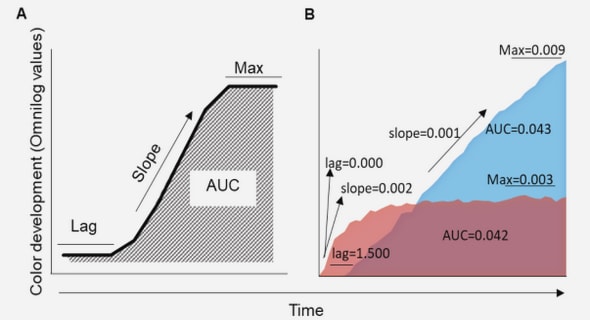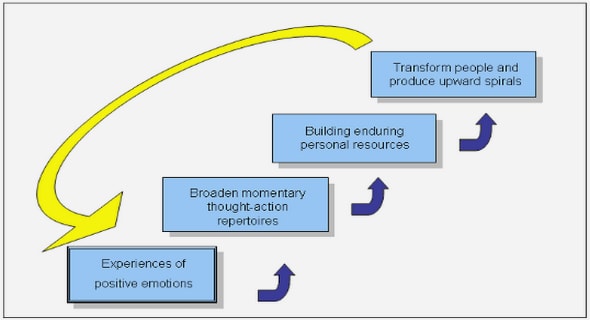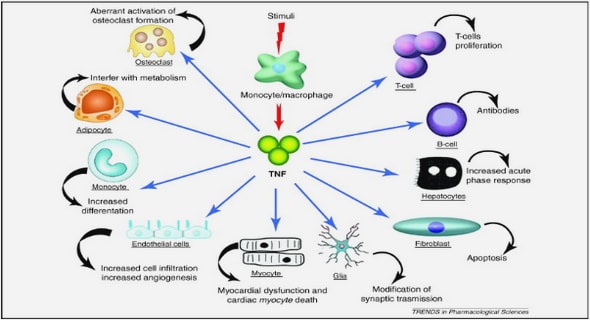Get Complete Project Material File(s) Now! »
CHAPTER 3: APPLICATION OF ISO 14001 AND OHSAS 18001 AT SEC
Introduction
This section presents a general outlook and summaries about the operational principles of Occupational Health and Safety Assessment Series (OHSAS 18001, 2007) and Environmental Management System (EMS) (ISO 14001, 2004) standards which were used to develop the environmental risk assessment in the electricity sector. The Swaziland Electricity Company (SEC) which is the case study area, within its strategic objectives sought to identify and manage the environmental, safety and health risks by implementing the above mentioned international standards. The two standards were found to have risk analysis and reduction as their main objective. ISO 14001 (2004) was used to identify and minimize environmental impacts or environmental risk whilst OHSAS 18001 (2007) was used to identify and reduce health and safety risks associated within the company processes. Hence, the implementation of the two standards by the company, assisted in achieving the main objectives of this study, which are to develop an environmental risk assessment and develop an innovative assessment tool in the electricity sector.
The scope of the environmental risk assessment was derived from clause 4.3.1 of the ISO 14001 (2004) and OHSAS 18001 (2007). This clause in both standards provides the important foundation for implementing the two systems in the organisation and without it the overall systems would surely fail. It has three aspects that had to be considered in this study namely;
- Identification of environmental aspects or hazards associated with the company’s activities.
- Risk assessment, a process of evaluating the risk arising from the hazard and aspects.
- Determination of applicable controls to eliminate or reduce risk to an acceptable level. Measures are based on the hierarchy of control measures.
Application of ISO 14001 EMS and OHSAS 18001
The application of the ISO14001 (2004) and OHSAS18001 (2007) is discussed in detail in the next sections.
ISO 14001 EMS of 2004
Organisations worldwide operate within a context where legislation plays a critical role, where the development of international policies presses for environmental protection, and where a growing concern begins to arise in relation to environmental issues and sustainable development by various interested and affected parties (ISO 14001, 2004).
According to Quazia et al., (2001) rigorous control of the impacts generated by the enterprise’s operations with the internal and external environment, are required to ensure environmental quality, elimination of risks associated with the disposal of wastes in neighbouring areas, disposal of contaminated effluents, noise propagation, among other issues. Environmental management systems based on ISO 14001 (2004) proved to be an interesting alternative to achieve these aforementioned objectives. ISO 14001 (2004) has a framework that guides the enterprise in understanding and structuring an appropriate management system. It permits the development of some environmental analysis tools and helps define the product life cycle.
ISO 14001 (2004), as an International Standard, specifies requirements for an environmental management system to enable an organisation to develop and implement a policy and objectives. This takes into account legal requirements and other requirements to which the organisation subscribes, and information about significant environmental aspects. It applies to those environmental aspects that the organisation identifies as those which it can control, and those which it can influence. The system helps organisations to comply with environment legislation and other requirements, ensure their sustainability and improve environmental performance.
OHSAS 18001 of 2007
Worldwide, many organisations are currently implementing the Occupational Health and Safety Assessment Series as part of their risk management strategy and also to fulfill legislative requirements and protect their employees. OHSAS 18001 (2007) provides a framework that allows organisations to constantly identify and control their health and safety risks, reduce the potential for accidents, aid legislative compliance and improve overall occupational health and safety performance.
Additionally, OHSAS 18001 (2007) was created via the concerted and combined effort from a number of the world’s leading national standards bodies, certification bodies, and specialist consultancy groups. It was developed to help organisations meet their health and safety obligations in an efficient and effective manner. It helps in a variety of respects; to minimize risks to employees, improve an existing OHS management system, demonstrate diligence and gain assurance. The aim of OHSAS 18001 (2007) is to manage a healthy workplace with a safe working environment by removing or minimizing the aforesaid risks in the light of the law, legislation, principles and regulations about workplace health and safety.
The above mentioned two systems OHSAS 18001 (2007) and ISO 14001 (2004) have similarities in their structure and requirements. These include the development of procedures for understanding risks/hazards and aspects/impacts, setting objectives and targets, establishing programs to achieve those identified objectives and targets, and reviewing performance against the identified objectives and targets. OHSAS 18001 (2007) and ISO 14001 (2004) are that part of the overall management system which include; the organisational structure, responsibilities, practice, procedures, processes and resources for determining and implementing the environmental or occupational health and safety policy. When an environmental or occupational health and safety policy is adopted, the environmental or occupational health and safety management program should follow a continuous improvement cycle. Hence, the two systems are aligned based on continual improvement and regulatory compliance.
Implementation of OHSAS 18001 and ISO 14001 within SEC
The implementation of OHSAS 18001 (2007) and ISO 14001 (2004) within SEC, addressed the following elements of the standards;
- Planning for hazard/ aspect identification and risk control/impact management
- OHSAS /EMS management programme
- Structure and responsibility
- Training and awareness and competence
- Consultation and communication
- Operational control
- Emergency preparedness and response and performance measuring, monitoring and improvement
The implementation of OHSAS 18001 (2007) and ISO14001 (2004) suggested the use of the approach known as Plan-Do-Check-Act (PDCA Cycle). The PDCA cycle demanded establishing objectives and processes, implementing the processes, monitoring and measuring processes and then taking action.
The implementation of the two standards as seen in Figure 3.1 is almost identical except that occupational health and safety is substituted by environmental. The main significant difference is that ISO 14001 (2004) is built around significant environmental aspects and impacts of an organisation whilst OHSAS 18001 (2007) is a result of health and safety risk assessment (Labodova, 2004).
The following key attributes were critical in formulating risk assessments in line with the premises of the OHSAS 18001 (2007) and ISO 14001 (2004) management systems.
Policy
Two separate policies for OHSAS 18001 (2007) and ISO 14001 (2004) were developed by SEC senior management. This demonstrated their commitment towards protection of health and safety of its employees, by reducing ill-health and accidents as well as environmental impacts resulting from the company’s activity. The policies indicated that the organisation was fulfilling the legal and other applicable requirements. The policies were relevant to scope of organisational activities and properly documented, communicated, signed with date and available to all the concerned parties at any time. The policies included as a minimum, the commitment of the organisation about the items below:
Preventing injury and ill health,
- Complying with applicable legal requirements relevant occupational health and safety (OHS) and environmental management national laws and regulations as well as with the other requirements to which the organisation subscribes,
- Pollution prevention
- Continually improving OHS and environmental management and performance.
Planning
The hazards, aspect and risks identification and their assessment, thereof were defined in planning phase. It was performed on continuous basis to identify, prevent, control and reduce risks in the future before it happened. It considered all the activities of the organisation, behaviour of people linked directly or indirectly to those activities and the effect of equipment being used. Reduction of hazards, aspects and risk was performed by eliminating, controlling or replacing of the main cause.
According to Ceyhan (2012), hazard and aspect identification mainly requires an exhaustive work flow and activity analysis to reach the hazards which may possibly arise during execution of any construction work. The process considers any kind of work or activity, both routine and non-routine activities, and situations and sources. For instance, the activities such as equipment cleaning or non-scheduled maintenance, plant or equipment start-up or shut-down, extreme weather conditions, utility disruptions, visits to workplace, temporary arrangements and many more. Incident reviews, safety tours and inspections, making observations of behaviour and work practices; interviews, surveys and participation of people, past experience of the organisation and experience of other organisations performed similar works compose the typical sources of information for identification process. A multidisciplinary competent team was required to perform the overall hazard or aspect identification, risk assessment and determining controls process.
In the planning phase the organisation established measurable and applicable objectives which were consistent with its policy Occupational Health and Safety (OHS) and environmental system. The organisation also established a programme to achieve determined objectives and these were to be reviewed regularly and improved by adjusting or modifying where necessary. Resources such as financial and human resources or infrastructure were determined, tasks to be performed were examined, and responsibility, authority and completion dates for each programmed task were assigned in the establishment of an effective programme
Implementation
Under implementation, the organisation developed implemented and maintained procedures to cover resource allocation, training, documentation and emergency related issues. These were developed by various departments and were meant to be adhered to on a daily basis.
Monitoring
After the implementation of the management system, monitoring the performance of the system was initiated. Internal auditors trained in the two systems monitored the performance of the system.
Management review
Management review was the final step in completing one cycle of the management system, and it contributed to continual improvement of the system. It formed an important component covered in both standards where management considered audit reports, investigation results, feedbacks, relevant communication and follow-ups and the records of previous management reviews. On the basis of review, management was able to inform updates in polices, objectives and procedures.
Declaration
Abstract
Acknowledgement
1 CHAPTER 1: Introduction
1.1 Background
1.2 The Electricity Industry in Swaziland
1.3 Statement of the Problem
1.4 Justification
1.5 Aim of the Study
1.6 Outline of the Thesis
2 CHAPTER 2: LITERATURE REVIEW
2.1 Introduction
2.2 Background
2.3 History of risk assessment
2.4 Origins of environment risk assessment
2.5 The Concept of Environmental risk assessment
2.6 ERA approach / Methodology
2.7 Definitions of key terms
2.8 Risk management framework and process
2.9 Risk assessment models
2.10 Sources of risk in the electricity sector
2.11 Importance of risk assessment
3 CHAPTER 3: Application of ISO 14001 AND OHSAS 18001 at SEC
3.1 Introduction
3.2 Application of ISO 14001 EMS and OHSAS 18001
3.3 Risk Assessment in Line with ISO14001 and OHSAS18001
3.4 Hazard Identification and Risk Assessment Process (HIRA)
3.5 Conclusion
4 CHAPTER 4: RESEARCH DESIGN AND METHODOLOGY
4.1 Introduction
4.2 Research Approach
4.3 Research Design
4.4 Development of simpler risk assessment tool
4.5 Data analysis
4.6 Reliability and validity
4.7 Ethics approval
4.8 Conclusions
5 CHAPTER 5: Development and application of tool for environmental risk assessment in the electricity sector
5.1 Introduction
5.2 Scope of environmental risk management methodology
5.3 Risk management process
5.4 Adopted risk assessment process
5.5 Risk evaluation methodology for Environment
5.6 Risk assessment tool for occupational health and safety.
5.7 Conclusion .
6 CHAPTER 6: FINDINGS, ANALYSIS AND DISCUSSION
6.1 Introduction
6.2 Questionnaire survey results
6.3 General information
6.4 Educational background of respondents
6.5 Work experience of respondents within SEC
6.6 Exposure to SHERQ training
6.7 Respondents per division
6.8 Summary of risks associated with electricity operational processes
6.9 Integration of environmental risk assessment and occupational health and safety into ISO 14001 EMS and OHSAS18001
6.10 Analysis of Results from the new tool
6.11 Occupational health and safety risk assessment
6.12 Hazard consequences
6.13 Environmental impacts and health and safety risks associated with SEC operations
6.14 Hazards leading to Occupational health and Safety risks
6.15 Summary of Chapter 6
7 CHAPTER 7: CONCLUSIONS AND RECOMMENDATIONS
7.1 Introduction
7.2 Summary of findings
8 REFERENCES
GET THE COMPLETE PROJECT
ENVIRONMENTAL RISK ASSESSMENT FOR THE ELECTRICITY SECTOR: A CASE OF SWAZILAND ELECTRICITY COMPANY


